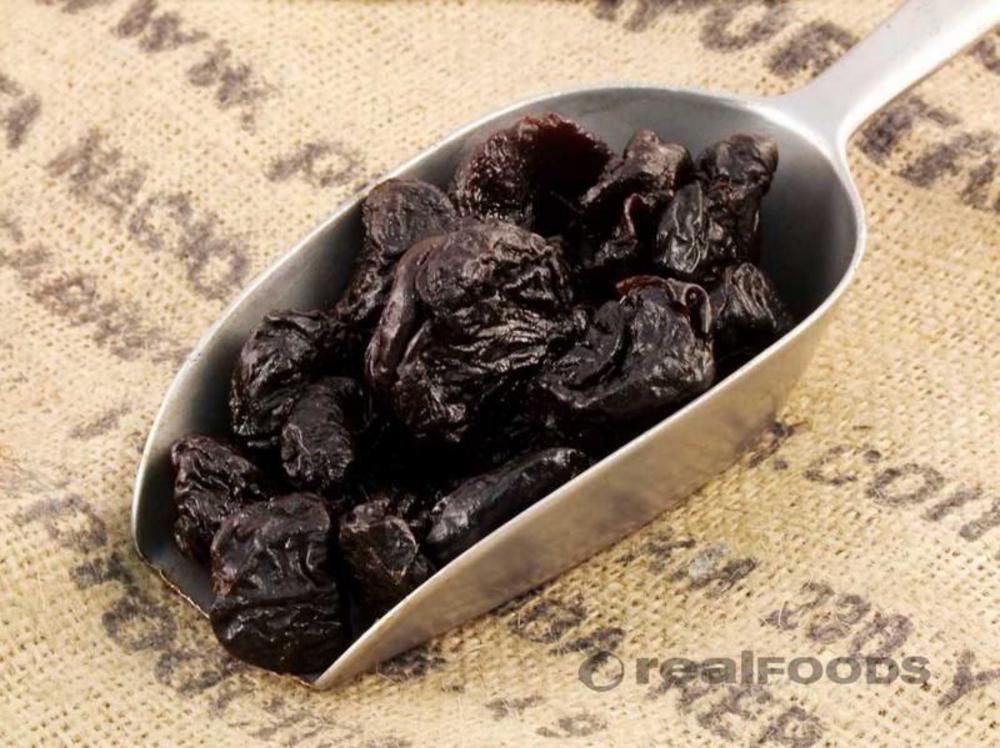Where are plums (or prunes) from?
Plums are in the Rosaceae Family, Genus Prunus and have been cultivated for hundreds of years in temperate regions. They are native to China, northern America, the Middle East and most of Europe. As Plums consist of many different species and cultivars, cross-breeding is common and a large number of rootstocks mean that plums are a diverse group (taxonomically speaking). There are over 2000 varieties including greengages and damsons. Prunes are simply dried plums.
Plums may have been one of the first fruits domesticated by humans. Plums are usually classified into a couple of groups: Prunus domestica (European plums) and Prunus Salicina (Japanese). Then there are the hybrids; damsons, greengages and sloe (P. Insititia and P. spinosa) and plum cherries (P. Americana) natives of north America. The majority of fresh plums available to buy are Prunus domestica or European plums. Most of the plums that we buy in here at Real Foods are grown in the UK. Not always though, so if you would like to know the country of origin for our current plums (or indeed any other fruit or vegetable), please email [email protected] and we’ll let you know.
What do plums look like?
Depends on the plum! The domestica species have a juicy taste and range in skin colour from purple, through yellow and green. Japanese plums are usually larger, rounder and firmer than their European cousins. As they ripen before the European plums they are important commercially, and their skin ranges from yellow through to red and purple.
And on the inside of a plum?
The European plums usually have soft-firm yellow flesh. Japanese plums have yellow to red flesh. Plums are officially classed as a drupe (stone fruit). Coconuts are also drupes along with almonds, peaches and nectarines. This means they have an outer skin, then an inner layer of flesh surrounding a stone. All plums have stones in them originally.
What do plums do?
They have high levels of antioxidants (prunes are higher in antioxidants than any other commercially available fruit). Plums are a good source of vitamin A (590 iu.), manganese, copper, fibre and potassium. They have good levels of vitamin C (around 15 mg of vitamin C per 100g of flesh) and calcium. Plums also contain some vitamin K and riboflavin.
Plums’ high levels of antioxidants help to reduce inflammation, fight cancer, reduce cardiac problems and strokes and help to boost the immune system. Plums (particularly prunes) help to stimulate bowel movements; it is the skin that provides most of these benefits so don’t remove it!
Plums’ antioxidants can help to prevent age-related macular degeneration – or in layman’s terms they help to protect your eyesight in old-age!
The useful amounts of calcium, potassium and beta-carotene (an antioxidant) help to regulate your heart rate, blood pressure and blood sugar levels. They can help with improving liver function and promote healthy skin.
Now you know all about plums, here’s a few ideas for preparing and eating them.
Eat them fresh!
Prunes are a good way to reap the benefits of plums, all year round! They contain fibre (both soluble and insoluble) which helps bowel regularity and balancing your blood sugar levels. Here's some more information on the latest studies on prunes.
Try baking them – slice some prunes in half, de-stone them and bake at Gas Mark 4 (180 C, 350 F) until they look wrinkled, eat straight away or drizzle with a little natural yoghurt for a delicious dessert.
Sweeten salads – try adding chopped plums to a rice or quinoa salad for a fruity kick. Here's a link to a plums, thyme and goat cheese salad in our recipes section.
Try cooking prunes, they make brilliant chutneys, tapenades and perk up a huge range of dishes. Here's our recipes section with all of the prune recipes.

By Kim Betney